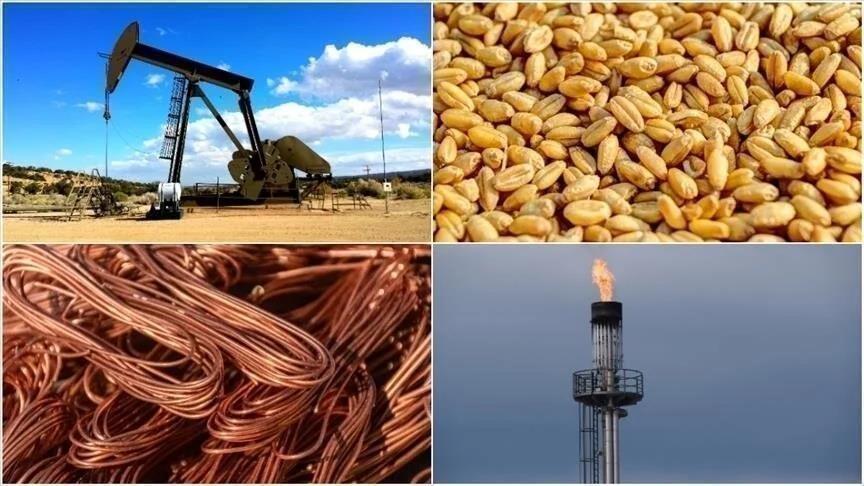Africa-Press – Lesotho. Commodity prices showed a mixed trend last week as US President Donald Trump’s escalating tariff policies fueled inflation concerns, casting uncertainty over global markets.
Investors are closely watching the upcoming US macroeconomic data, including inflation figures and Federal Reserve Chair Jerome Powell’s statements, amid concerns that the Fed’s monetary policy may not align with Trump’s trade strategies.
Analysts note that while the US is avoiding a trade war with Canada and Mexico, tensions with China continue to rise, heightening fears of inflationary pressure.
Precious metals
Gold surged to a record high of $2,886.65 per ounce last week, up 2.2%, driven by geopolitical uncertainty and Trump’s tariff measures. In response, Citibank raised its 2024 gold price forecast from $2,800 to $2,900 per ounce.
Other precious metals also saw movement: silver gained 1.4%, while palladium and platinum declined by 4.5% and 0.7%, respectively.
Industrial metals
Copper prices jumped 7.7% per pound after the London Metal Exchange announced new regulations requiring large private deals to be traded on its platform, sparking concerns over liquidity.
Zinc rose 1.5% as Trump’s 10% tariff threat on Chinese goods fueled supply fears, given China’s dominant role in the global zinc market.
Nickel climbed 3.6% following Indonesia’s announcement of planned reductions in its nickel ore mining quota for 2025-26. Export restrictions on Indonesian nickel products also contributed to the price increase.
Lead rose 2.7% per pound last week.
Meanwhile, Trump proposed a trade deal with Ukraine on Feb. 3, suggesting the country supply rare earth minerals to the US in exchange for financial aid. Ukrainian President Volodymyr Zelenskyy signaled openness to negotiations.
Energy
Brent crude oil fell 2.3% last week after Trump’s 10% tariffs on China and Beijing’s retaliatory 10% duty on US crude imports. However, the impact on global oil prices remained limited.
OPEC+ maintained its plan to gradually increase oil production by 120,000 barrels per day starting in April, aiming to return 2.1 million barrels to the market by the end of 2025.
Meanwhile, Saudi Aramco raised its March oil sales price by $2.40 per barrel — the highest increase since August 2022 and above market expectations.
Natural gas surged 8.8%, marking its biggest gain in two years, after the US Energy Information Administration reported a withdrawal of 174 billion cubic feet from storage in the week ending Jan. 31. The shortfall, 4.4% below the five-year average, was driven by rising electricity demand from utility providers.
In Europe, natural gas storage levels stood at 51% as of Feb. 4, below the five-year average.
Agriculture
The US Department of Agriculture (USDA) suspended funding for some farmers pending a comprehensive review, while purchases for US international food aid programs were also halted. Despite concerns, the Trump administration assured that agricultural support programs would not be affected.
Wheat and soybeans rose 4% and 0.6% per bushel, respectively, as Trump’s trade policies heightened market volatility. Analysts note that China, the world’s largest importer of wheat, soybeans, and corn, is unlikely to impose tariffs on US wheat due to rising prices on the Chicago Mercantile Exchange.
Corn climbed 1.1%, while rice fell 0.9% to a two-year low as India eased export restrictions and Vietnam suspended 350,000 tons of rice purchases amid falling prices.
Meanwhile, the UN Food and Agriculture Organization reported that the global food price index dropped from 127 to 124.9 points in December.
Other soft commodities
Coffee prices soared 7% last week due to unexpected frosts and prolonged drought in Brazil, which cut crop yields. The USDA warned that global coffee stocks are expected to reach a 25-year low.
Cotton and sugar dipped 0.2% per pound, while cocoa tumbled 6.8% per ton.
For More News And Analysis About Lesotho Follow Africa-Press






